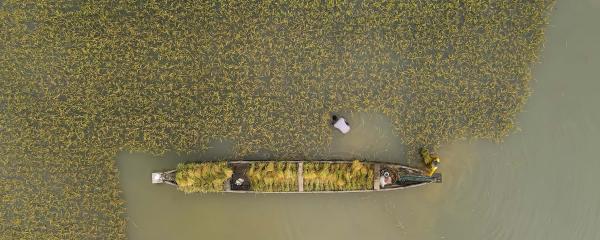Early Warnings for All
Challenge
Early warning systems are a vital tool to help society adapt to hazardous weather, water and climate events. They are cost-effective and save lives, reduce economic losses, and provide a nearly tenfold return on investment.
Early warning services underpin progress in many of the SDGs and embrace the power of partnerships. For example, they reduce vulnerability to extreme weather events and associated poverty; they enable anticipatory action to protect agricultural livelihoods and food security; they minimize loss and damages; Heat early warnings support good health and well-being and contribute to more sustainable cities.
Early warnings work. They must work for everyone. They are not a luxury but a MUST. The statistics speak for themselves. Between 1970 and 2021, there were over 2 million reported deaths and $4.3 trillion in economic losses from weather, climate, and water extremes.
Economic losses have soared, but improved early warnings and coordinated disaster management has slashed the casualty toll. Thus, there were more than 550,000 reported deaths from weather, climate and water-related hazards between 1970 and 1979. Between 2010 and 2019 this fell to just under 185,000.
That is still unacceptably high – and more than 90% of reported deaths occur in developing countries.
Despite the urgent need, only half of the countries worldwide report having adequate multi-hazard early warning systems.
Response
The international Early Warnings for All initiative seeks to change that and to ensure that everyone on Earth is covered by early warning systems by the end of 2027.
WMO, together with the United Nations Office for Disaster Risk Reduction (UNDRR), co-lead the Early Warnings for All initiative, with support from the International Telecommunication Union (ITU) and the International Federation of Red Cross and Red Crescent Societies (IFRC).
Early Warnings for All is an example of SDG 17 - partnerships - in action. It requires global collaboration across UN entities, the scientific community, the private sector, financing institutions, governments, academia and others.
Early Warnings for All are being rolled out on the ground. This is thanks in no small part to impetus provided by the Climate Risk and Early Warning Systems (CREWS) Initiative, which funds projects in the Least Developed Countries and Small Island Developing States in the Caribbean and Pacific to establish risk-informed early warning services. This is complemented by the Systematic Observations Financing Facility (SOFF) to close the climate and weather observations data gap in countries with the most severe shortfalls.
WMO programmes – including those on tropical cyclones, drought and flood management – are now fine-tuned to support the over-riding priority of Early Warnings for All.




